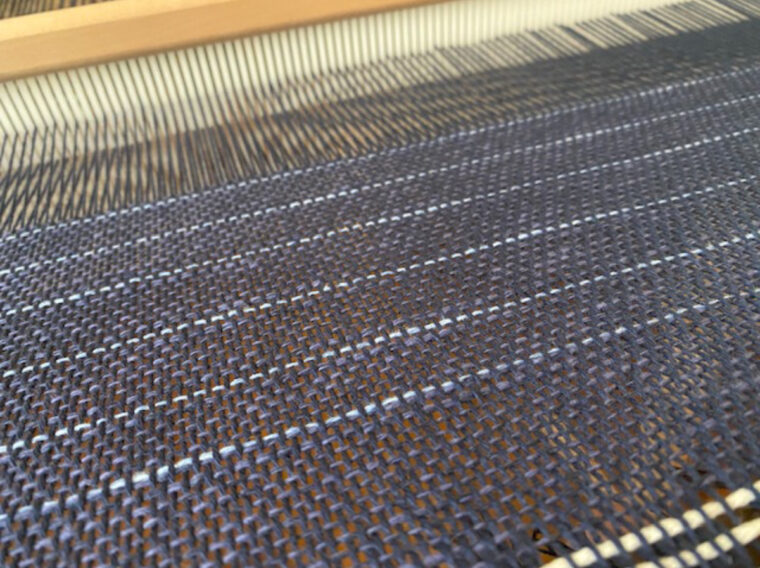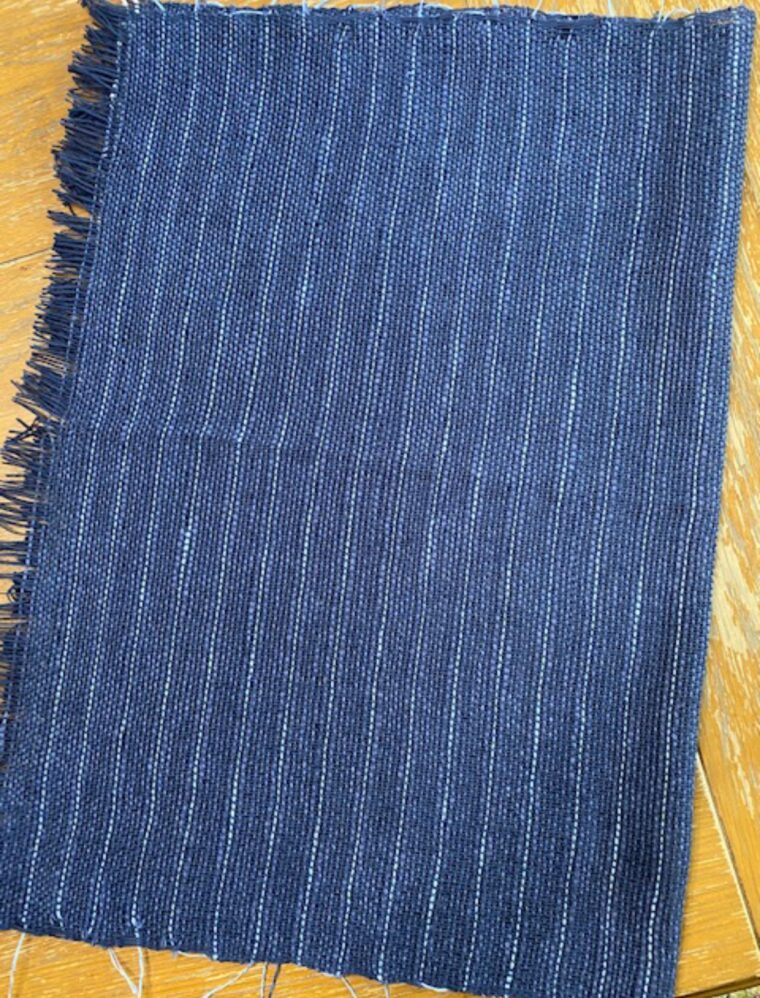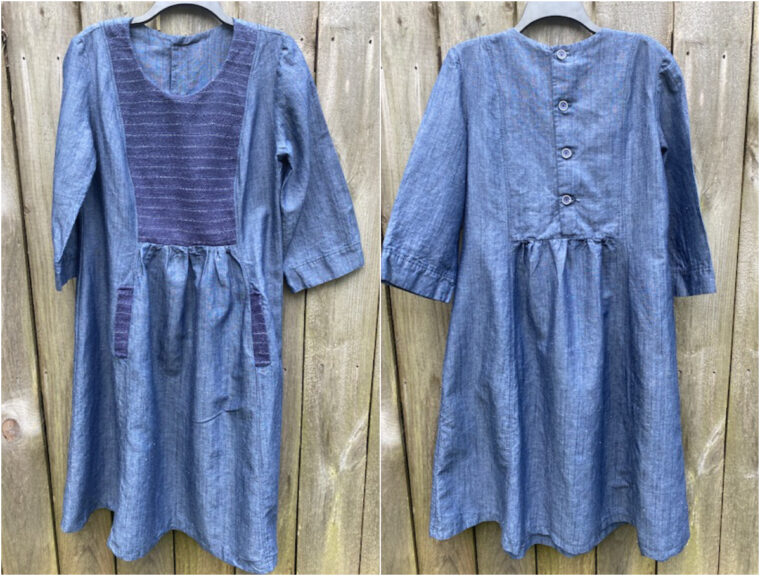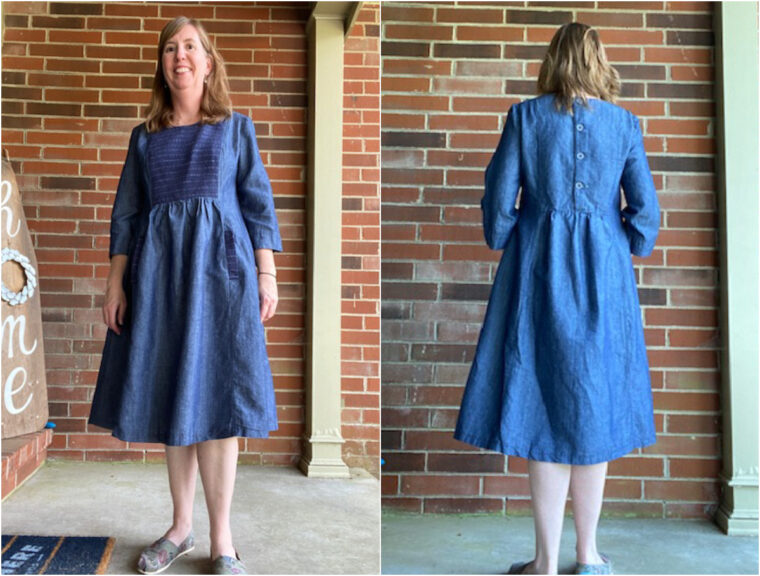aimee’s cinema dress with handwoven yoke
For years, I'd been daydreaming about getting my hands on a rigid-heddle loom, and in 2020, I finally caved and purchased one. After weaving scarves, dishcloths, and napkins, I realized that if I was truly going to dive into weaving, I needed to find a way to merge it with my passion for garment sewing.
My loom is only 24 inches wide, which naturally limits the size of pattern pieces I can create. However, after flipping through various versions of the Cinema Dress pattern, I fell in love with the idea of using a different fabric for the yoke. I was thrilled when I discovered that the yoke pattern piece perfectly fit the width of my loom!

The next step was selecting yarn for the woven yoke and choosing fabric for the remainder of the dress. I settled on a beautiful dark indigo chambray. I wanted the yoke to stand out just enough to catch attention but not overshadow the entire dress. To ensure the yoke wouldn't be overly bulky, I decided to use a thinner yarn.
Initially, I experimented with a linen/cotton blend yarn from Gist Yarn in dark indigo and light blue for both the warp and weft. Unfortunately, I struggled with tension issues on two attempts (I'm still relatively new to weaving). On my third try, I used a dark indigo cotton for the warp and reserved the linen/cotton blend for the weft, and it worked beautifully.

The most nerve-wracking part of the project was cutting into my handwoven fabric. Once I mustered up the courage to cut out the front yoke piece, I was delighted to discover that there was enough leftover material for the welt pocket pieces as well.
Cutting out a size 10, I didn’t need to make any adjustments. For design purposes, I opted for a shorter skirt piece and skipped the topstitching on the yoke. Instead of adding the suggested V-notch to the neckline, I kept it rounded because I suspected the thickness of the handwoven fabric might cause the notched version to bunch awkwardly.

Looking back, there are a few things I’d handle differently if I were to sew this pattern again. For instance, I’ve started finishing my seams with my serger before assembling the pieces, but for this project, I neglected to do so. While it wasn’t a huge issue until I reached the side panels and pockets, I regret not serging the edges of all four pocket pieces and the side panels before stitching them together. It became incredibly challenging to achieve a clean finish once everything was already sewn.
(Speaking of sergers, I’ve recently begun using mine to gather fabric, and oh, what a difference it makes! I gathered the skirt pieces and sleeves this way and couldn’t be happier with the results compared to using basting stitches. If you own a serger, I strongly recommend figuring out its settings and giving it a try!)

At times, the dress reminds me of something from the 1700s—perhaps I’ve been indulging too much in "Outlander"—but it also has a certain "homeschool mom" vibe, which, ironically, I am. Knowing the risk involved with the chambray fabric, I’m still pleased with how the dress turned out. Every time I gaze at the front yoke, I’m filled with excitement and pride knowing I wove that fabric myself. It’s been a while since I’ve created something like this, and it’s such a joy to wear it and spin around.
---
While the project was challenging, the satisfaction of completing it far outweighs the difficulties. Weaving and sewing have always been passions of mine, and combining them in this way felt like a natural evolution of my creative journey. I hope sharing my experience inspires others to explore their own unique ways of blending hobbies and interests!
Organdy Pleat,Organdy Pleat Fabric,Organdy Crease Fabric,Organdy Crinkle Fabric
SHAOXING XINGZHOU TEXTILE CO.,LTD , https://www.eurofashiontextile.com